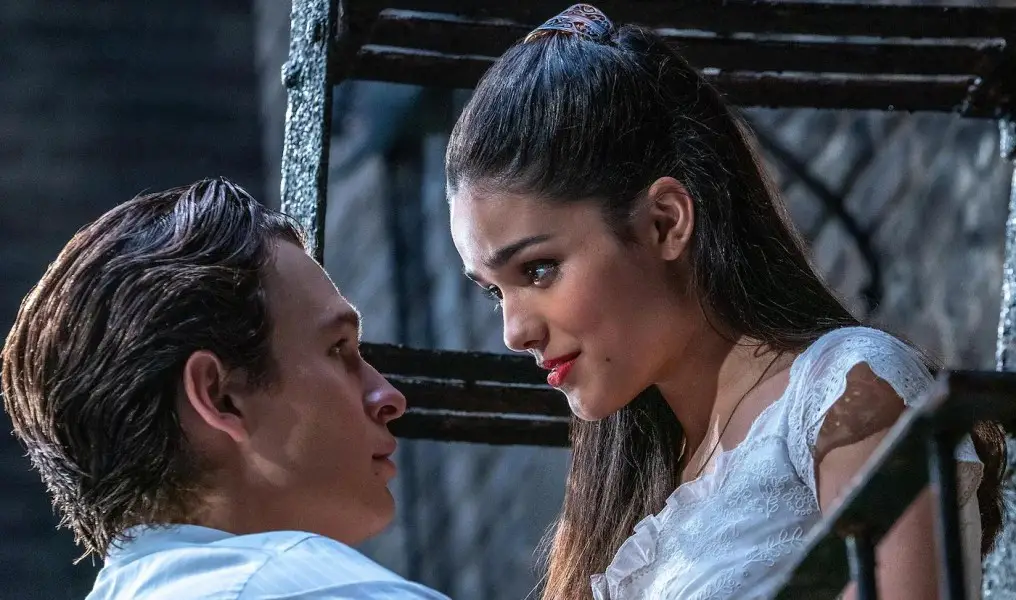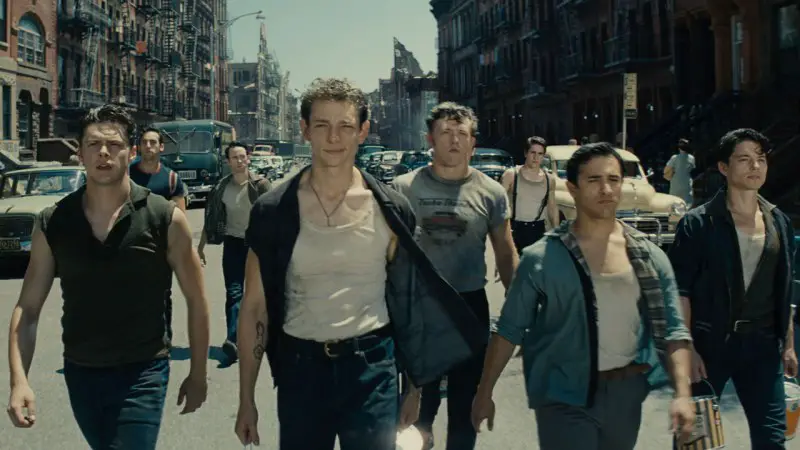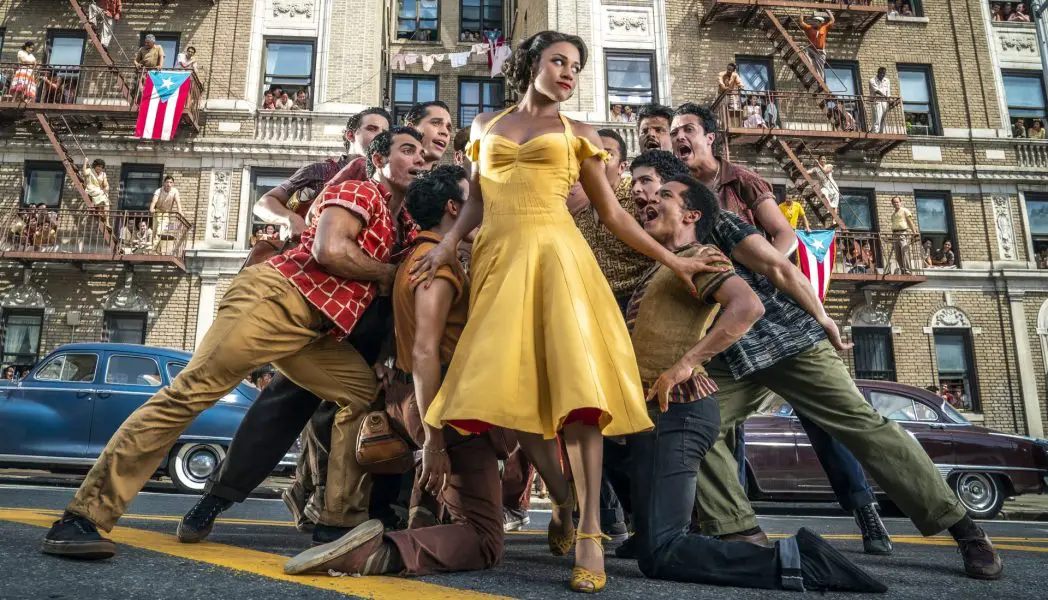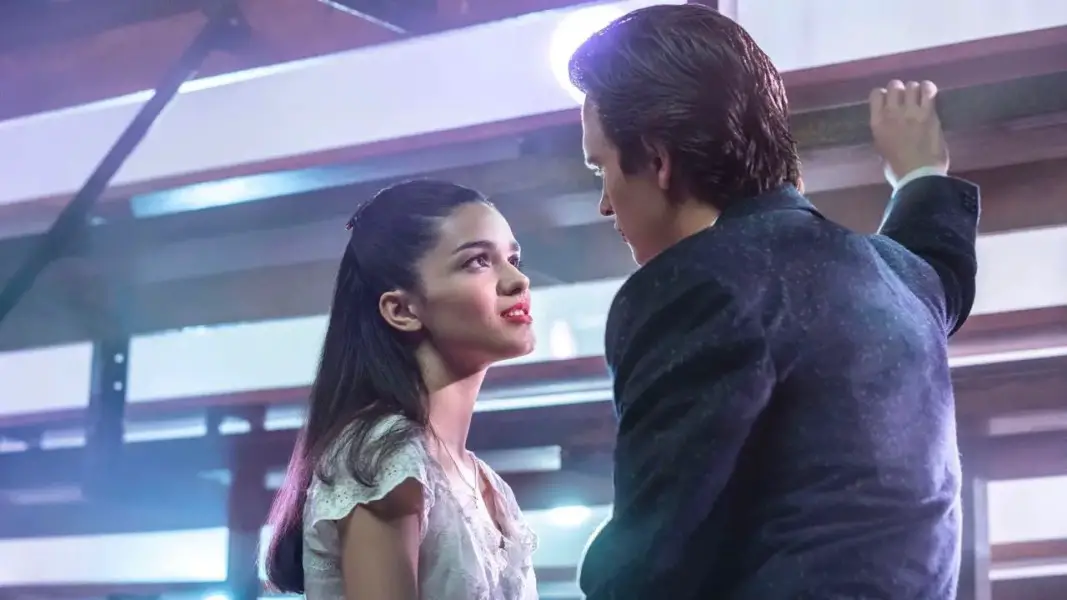‘West Side Story’ (2021) Review: “One Step Forward, One Huge Step Back”
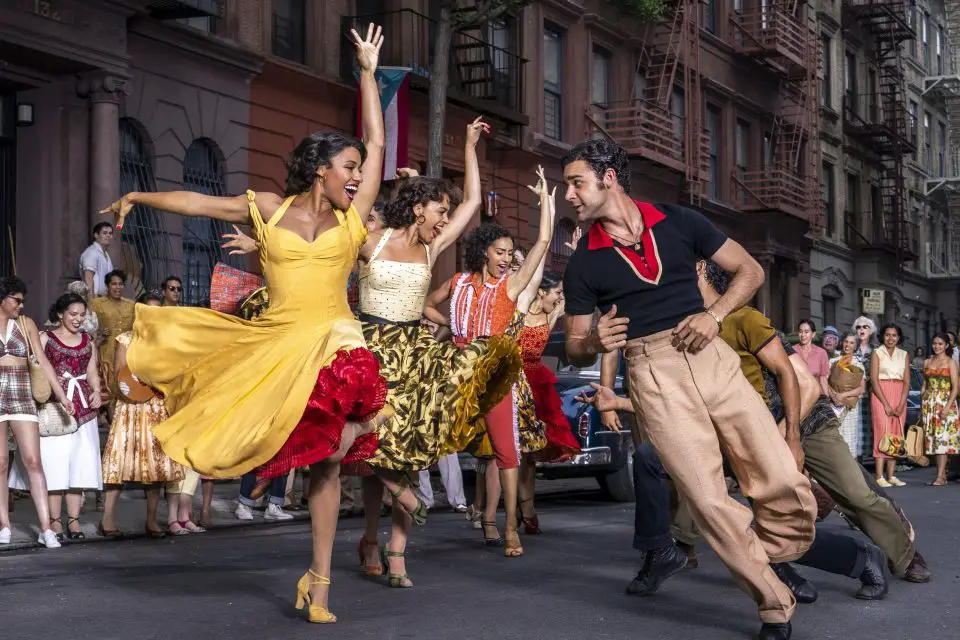
From the very beginning, West Side Story had a lot of weight on its shoulders. The original 1957 production by Jerome Robbins marked the Broadway debut of late lyricist Stephen Sondheim, and its success led to a film adaptation in 1961. That film won 10 of its 11 nominations at the Academy Awards the following year. In addition to winning Best Picture, it also saw a Best Supporting Actress win for Rita Moreno, marking the first time a Hispanic actress did so. Naturally, many fans hold it in high regard.
Unfortunately, what is born crooked can never be straightened. Theater fans may revere it, but they only do so because they are either painfully unaware or blissfully ignorant of its problematic elements. For one thing, the 1961 film makes the egregious choice of casting white actors in brownface as Puerto Rican characters. To its credit, this new iteration – brought to us by director Steven Spielberg – doesn’t make that same mistake. Still, it functions more as a spectacle by and for white American viewers than a display of compassion for oppressed Puerto Ricans. In an age where representation matters, it’s hard to accept half-measures as anything substantial.
As usual, West Side Story centers on a rivalry between street gangs in 1950’s New York City. The Jets are the greasy, finger-snapping white kids who think Puerto Ricans are taking away their neighborhood along with any opportunity for their own growth. The opposing Puerto Rican gang, the Sharks, acts as a defense in response to the Jets. Amidst all that is Maria (Rachel Zegler), the wide-eyed little sister of the Sharks leader, Bernardo (David Alvarez). She longs for a better life under the illusion of the prosperity the “American Dream” promises. We also have Tony (Ansel Elgort), a founding member of the Jets and an ex-convict who wants to leave the past behind. Eventually, Maria and Tony meet and spark a romance, which causes even more tension between the Jets and the Sharks.
READ: ‘Hawkeye’ Episode 4 Review
This misguided spin on Romeo and Juliet oversees a historically complicated power dynamic between the United States and Puerto Rico. In spite of West Side Story being sold as a step forward in Latine representation, the culture portrayed in the film is ornamental. From the very first scene, everything about Puerto Ricans is secondary to the white experience. There is not enough razzle-dazzle in the world that could erase the blatantly offensive accents and gratuitous violence inflicted upon the Puerto Rican community. The incessant use of old racial slurs feels unnecessary and downright aggressive.
With the beginning of “Tonight,” Maria and Tony’s first song together, it felt like a thinly-veiled analogy of the Jones Act. This federal maritime law only allows U.S. shipments to go in and out of Puerto Rico, thus crippling its economy. As a result, Puerto Rico plays a submissive role in the relationship between it and the U.S. Meanwhile, Maria mirrors this dynamic, as she practically kneels for an American man fetishizing her.
On top of that, the film incorporates details of the Puerto Rican experience without much thought. Early on, the Sharks sing Lola Rodríguez De Tió’s revolutionary anthem as they leave the Jets. The same anthem Puerto Ricans themselves could not utter without fear of getting arrested due to the Gag Law of 1948. Incidentally, it was repealed in 1957, the same year in which the musical takes place. Due to the violent U.S. government repression of the Puerto Rican independence movement, Puerto Ricans today cannot sing Rodríguez De Tió’s call to freedom at official events.
These are likely morbid details that shouldn’t concern a Broadway musical. But the use of political aspects of Puerto Rican culture without any important historical context results in a shallow narrative. Screenwriter Tony Kushner’s attempts to appease the Puerto Rican community fall silent on English-speaking ears. Moreover, the decision to not subtitle the Spanish dialogue ends up further alienating the target audience.
Expectedly, one of the few remarkable aspects of the film is the meticulous choreography. “America” remains the crown jewel of the film, attempting to emulate a vibrant sequence of song and dance akin to In The Heights‘ “Carnaval del Barrio.” The song’s disparaging lyrics “[Puerto Rico] Let it sink back in the ocean” were rectified. However, the rhythmic battle between two perspectives that plague Puerto Rican society today remains. Anita is still the girl who would rather leave Puerto Rico behind because of the poverty that has resulted from U.S. condemnation.
READ: ‘Masters of the Universe: Revelation’ Part Two Review: “A Nostalgic and Wild Ride”
Meanwhile, Bernardo still longs to return in spite of the hardships that forced him to leave. This is an intimately accurate reality Puerto Ricans live to this day, and all this movie does is use that reality to create jazzy tunes. Any chance of it exploring that colonized experience goes out the window. It gets to a point where one asks, “Is this abhorrent ignorance or just plain dismissal?” As a Puerto Rican born and raised on this island, it’s painful.
The supporting cast carries this film, with Ariana DeBose a clear stand out as Anita. Her voice, her acting, and, of course, her dancing bring the magic of West Side Story to life. If this film is deserving of any awards recognition, all eyes need to be on her. Not only is she the only Puerto Rican actress in the main cast, but she’s also one of the very few Afro-Boricuas in the entire film. Recalling the heavy and valid criticism that fell upon In The Heights for its colorism, it is interesting to see a much quieter conversation regarding West Side Story.
Spielberg’s visual direction is as ambitious as always, capturing incredibly designed set pieces that will impress most audiences. However, his knack for grandeur falls short when he awkwardly cuts between scenes. It feels like he’s attempting to make his own La La Land magic, but his lack of experience with musical theater dynamics shows. Considering the fierce competition this year with movie musicals, even Leos Carax’s Annette fares better with the genre.
Despite a large portion of Latines in the cast, the scenes of them speaking Spanish were awkward at best. It is a parody of Caribbean Spanish and code-switching at worst. Zegler is the unfortunate stand-out, as she dons an overbearing generic accent. It’s clear that Spielberg cast her for her impressive vocals. Unfortunately, she does not seem like the rising star many are praising her to be. The chemistry between Elgort and her never quite clicks like DeBose and Alvarez. Tony and Maria’s romance doesn’t completely entrance you the way one would expect. For some, it can be quite maddening.
Despite Rita Moreno’s role as executive producer this time around, Spielberg remains disconnected as a director. The film is eye-catching and generally entertaining for fans of musical theater, in spite of the problematic tones. Spielberg makes it a point to capture the Hollywood glamour “look and feel” of the era throughout the entire film. It is a technical spectacle that will no doubt inspire the genre for the following years. One can only hope that it won’t dominate the perception of Puerto Rico like its predecessor once did. – Ileana Meléndez
Rating: 4/10
West Side Story is now playing in theaters.

